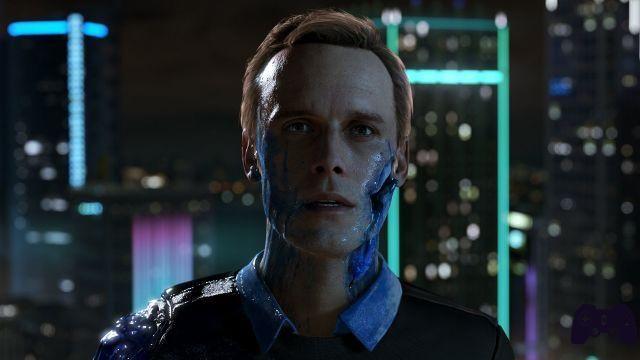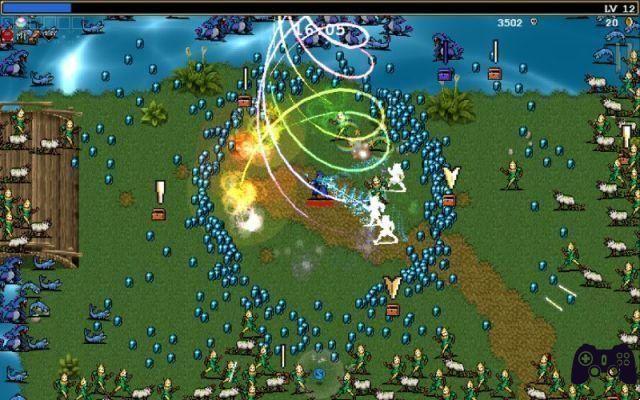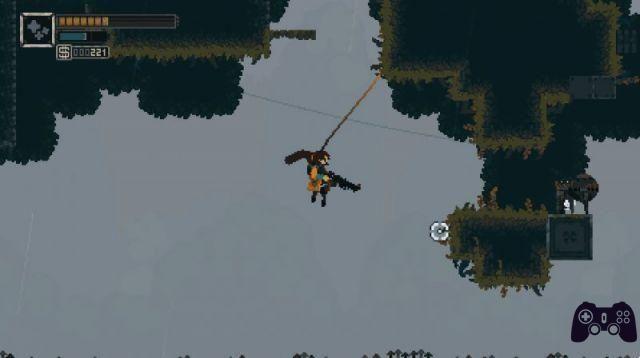The meeting, at the end of 2023, of two of the main science fiction authors of all time, can only be the result of A complex calculation carried out thanks to psychohistory.. On the one hand, in fact, we have The Invincible, published on November 6, a transposition of Stanisław Lem's 1964 masterpiece of the same name. The novel, set on Regis III, a seemingly uninhabited world, outlines the contours of an incomprehensibly irrational, obtusely brutal, and needlessly overwhelming humanity through allegory and references.
On the other hand, however, Journey to Foundation is examined here, which, taking advantage of the momentum of the series available on Apple TV+, fresh from its second season, refers to the gigantic literary work of Isaac Asimov, the Fundamentals Cycle, made up of a total of seven books.
Shaping an adventure that fits and adapts to the immense contours of the Foundation is an operation as exciting as it is dangerous. The margins of freedom are very wide and there are summarized guidelines that facilitate the creation of a work already endowed with a certain internal coherence. At the same time, we expose ourselves to the risk of criticism and general skepticism from the most intransigent fans, already partly burned by the adaptation of the Apple series considered by some to be inadequate. Adding to the previous concerns is another distinctive feature of Journey to Foundation, for some an additional source of suspicion, namely that of being a virtual reality title, available on Meta Quest, Pico y PSVR 2, the device we tested it on.
Many reluctance, as we will say in the course of this Review of the trip to the Foundation, finds partial justification in practice. But not for the reasons you might expect.
Faithful and inspired
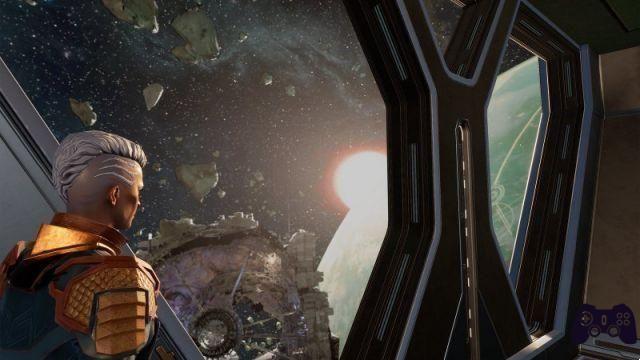
The game developed by Archiact, the team responsible for other virtual reality experiences such as Doom 3 VR Edition, in a clear attempt to replicate the versatility of the literary saga on which it is based, is an authentic mix of genres and game phases well linked together. .
In the shoes ofAgent Ward, a member of the Public Safety Commission, as an officer of the Empire you will initially have to try to discover who has kidnapped a member of the nobility on a space station at the edge of the universe. What initially seems like an operation with obvious, if dramatic, implications soon turns out to be part of a much larger conspiracy. The proportions of the collateral damage of your actions, in fact, will have repercussions throughout the Empire, to the point of being able to compromise and Influence the course of history by making decisions. at particular moments in the plot.
Journey to Foundation, although it makes use of varied game mechanics and an undeniable impact on the global production economy, is above all a first-person narrative adventure.
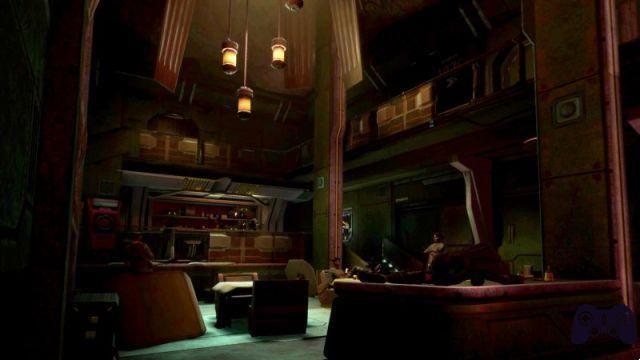
The quality of the plot, along with the good characterization of the main characters, ensure that the game remains interesting and full of ideas at all times. the eight hours necessary to reach the final credits. As lovers of the Asimov Cycle, as well as weak fans of the series available on Apple TV+, it is difficult not to get excited about the work done by the developers in this regard. The fidelity to the original material is palpable, especially when consulting theencyclopedia, a practical and fundamental basis not only to refresh the memory of what was experienced up to that moment, but above all to allow neophytes to orient themselves in the gigantic narrative universe created by the writer of Russian origin. Not everyone will have the patience and desire to flip through each page, but they are all excellently translated and manage to provide an excellent summary.
As well In visual terms, Journey to Foundation does its job.. Of course, it's not technically a shocking product. Some lighting effects are capable of giving that depth of field that makes virtual reality so immersive. The polygonal models are well rendered and generally well animated. You can see the textures. However, don't expect the richness of detail and fluidity of Horizon Call of the Mountain, which graphically remains the highest peak achieved by PSVR 2 in purely visual terms. However, between space bases, spaceships and planet surfaces that are a little too desolate, but with evocative views, the adventure has a lot to offer in terms of variety of explorable settings.
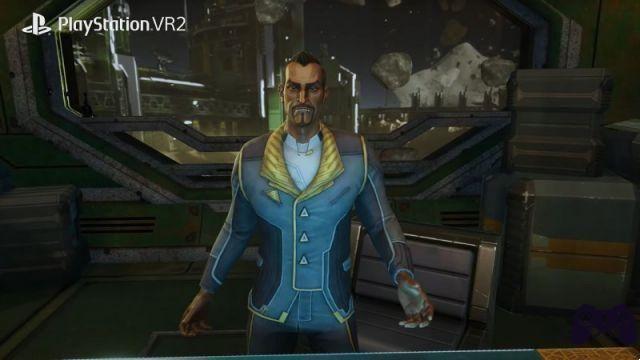
Journey to Foundation, considering the plot and graphics, turns out to be a great game for science fiction and Asimov lovers who want to experience the climate and atmosphere known from reading the Cycle novels. Even without peaks, neither in narrative terms nor from an aesthetic point of view, Archiact's effort manages to satisfy fans of the novel series in one fell swoop, construct a sufficiently intricate plot and propose science fiction scenarios to really enjoy. virtually.
Too
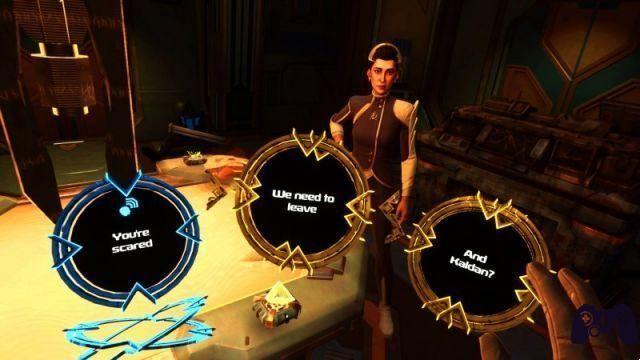
Unfortunately, speaking of the purely recreational aspect, not everything works well and the versatility of the game represents its greatest limitation. The narrative structure itself, to begin with, is affected by a certain illogicality as soon as it is mixed with the mechanics that try to enrich the production. While not unforgettable, as already mentioned, the plot offers little twists and introduces characters who have their own motives. Everything would generally be fun and perfectly contextualized, if Agent Ward's psychic abilities did not constantly attempt to break coherence. within the title.
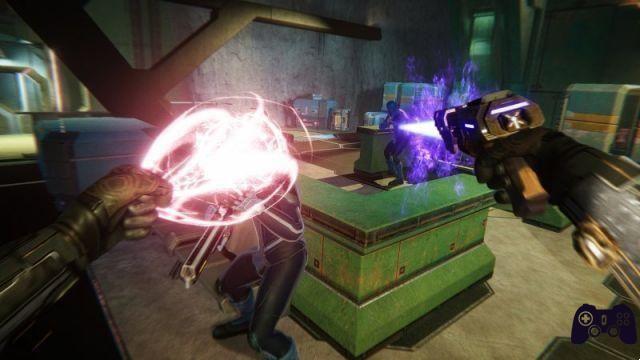
The protagonist, in fact, has the ability to perceive the emotions of her interlocutors, an ability that some characters in Asimov's saga actually know. This feature fits perfectly in a game in which you have to track criminals, talk to suspects in search of irrefutable evidence and make decisions that have real repercussions on the progress of solving the case (although in practice there are not so many). ). Unfortunately, if this usually happens, in certain situations the mechanism gets stuck almost inexplicably, forcing the user to repeat the same conversations, until the response that the developers have planned for the continuation of the plot is selected.
What is out of place is not so much this eventuality in itself, since no matter how much freedom is granted, inevitable and obligatory steps cannot be missing. What is annoying, in any case, is the servile repetition of the same scene, as if what was said a moment before had already been completely forgotten. This is also certainly a situation well known to the most experienced players, we certainly cannot deny it, but what catches our attention is the arbitrariness with which this happens, since in certain circumstances some dialogues and questions already asked are not asked again. repeat. In short, there is the possibility of avoiding surreal exchanges, but it is not always used. This creates situations and extremely strange moments and disturbing, which abruptly interrupt the player's identification.
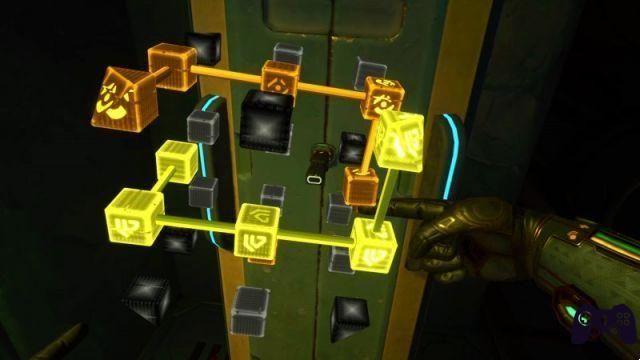
If Agent Ward's power is useful in providing more dialogue options, when it comes to opening the way more impetuously, as long as the relative bar is full enough, the heroine will be able to resort to the same ability to momentarily block her opponents from playing with their brains. Journey to Foundation, in fact, is not limited to proposing a first-person research adventure. In an attempt to open himself to a wider audience, he intersperses long (and mostly interesting) dialogues with combat phases.
In addition to the aforementioned psychic ability, the protagonist can make use of a Blaster which can be upgraded during the adventure. From a simple pistol, it can evolve by expanding the firing modes, to be used as a shotgun, a machine gun or a sniper rifle, depending on the situation. The only limit, in this sense, is overheating, which will force you to dose the injections.
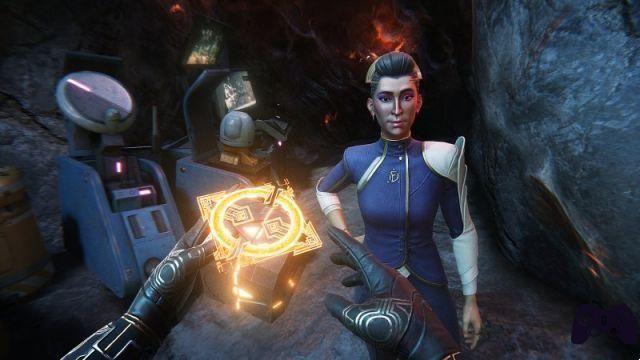
In practical terms, if PS VR2 Sense does an excellent job in terms of detecting movements in the environment, with the advantage of extremely fluid and intuitive aiming, the game shows several limitations in these phases. He level designFor starters, it's not particularly brilliant at creating battlefields that allow for an alternative strategy to a frontal attack. Opponents' hit boxes are far from accurate. Agent Ward's very slow movement represents a serious obstacle to the fun. The avatar, in fact, cannot run, even when pressured by enemy fire. This means that each shootout essentially takes place in the exact same location where it began, to the detriment of the potential implication these phases could have triggered.
It's not much better when you want to hide from enemies, luckily there are very few of them. phase secrecy. Everything, if possible, becomes even more static and predictable, with the player forced into very long moments of total immobility, before being able to head to the next hiding place.
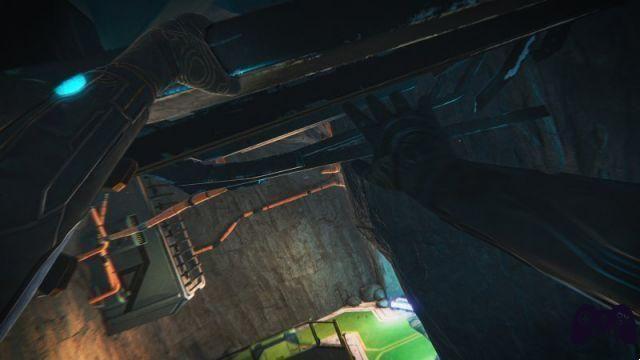
When dealing with climb or solve some puzzles that involve rotating objects and interfaces, the control system will get in the way. During climbing, which is optional to prevent motion sickness sufferers from getting into difficulty, the game engine has difficulty managing depth, especially if you play sitting down. However, when solving some puzzles, using tools or activating buttons is difficult and requires repeating the same gesture.
The result is an experience that is engaging as you explore the settings and dialogue with the characters, but that becomes much less interesting, if not downright frustrating, as soon as you pick up the blaster or have to do something else.
Conclusions
Tested version PlayStation 5 digital delivery PlayStation Store Price 37.99 € Holygamerz.com 6.5 Readers (2) 9.4 your voteJourney to Foundation is overall a good adaptation. It was not that difficult to derail and disrupt the narrative and aesthetic canons of the series of novels to which it refers. From this point of view, fortunately, a good job was done thanks to inspired art design and an interesting and intricate plot at the right point. Unfortunately, in an attempt to thicken the gameplay and involve a broader audience, the development team wanted to introduce, in addition to dialogue and scenario exploration, shooting phases, moments of stealth, climbing and puzzles to solve. All these alternative moments, while they undoubtedly break the monotony of the conversations, reveal flaws that end up making everything less interesting and effective than expected. The eight hours that the game requires to complete pass, of course, but in some cases be prepared to be bored or have to overcome some particularly frustrating phases. A real shame, because with a little more attention and less desire to exaggerate, Journey to Foundation could have been an attractive product not only for the most avid fans of Isaac Asimov, who will still have the opportunity to experience this adventure first-hand. Set in one of the most famous literary empires of all time.
PRO
- Respectful of the work that inspired him.
- Successful artistic design
- interesting plot
AGAINST
- The level design of the shooter's phases is too banal.
- The control system is not always perfect
- Boring stealth phases.




